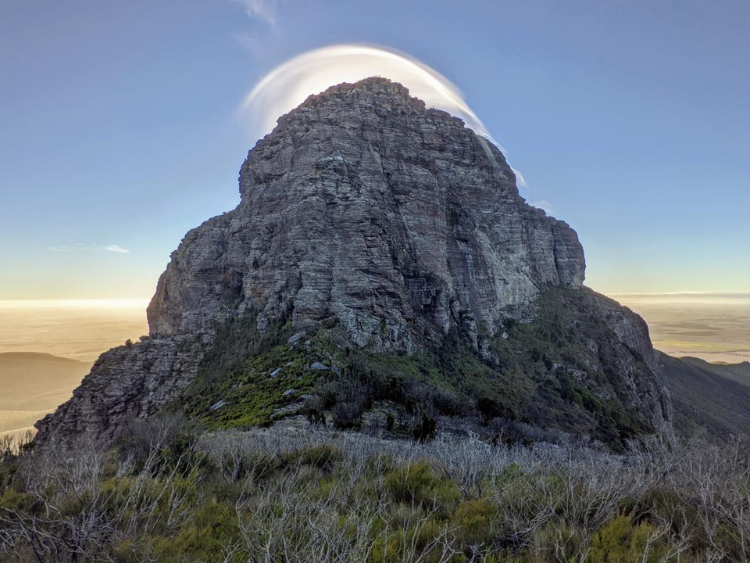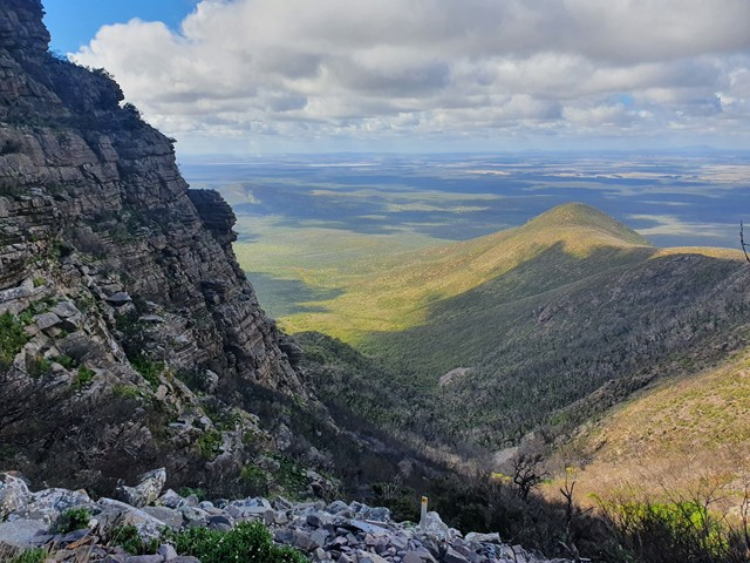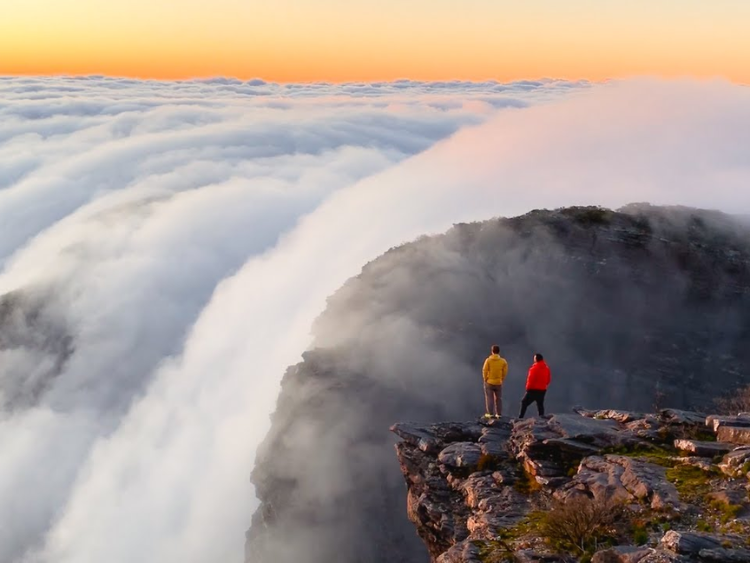
Stirling Range National Park is located in the Great Southern region of Western Australia, approximately 337 kilometers southeast of Perth. It's renowned for its rugged mountain ranges, including Bluff Knoll, which is the highest peak in the park and also the highest peak in the southern half of Western Australia.
Here's some more information about Stirling Range National Park:
- The park covers an area of about 115,000 hectares.
- It is characterized by its dramatic peaks, deep gullies, and diverse flora and fauna.
- The park is a popular destination for bushwalking, rock climbing, birdwatching, and wildflower viewing.
- It is particularly famous for its wildflowers, with more than 1,500 species of plants, including many rare and endemic species.
- The best time to see wildflowers in bloom is typically during the spring months of September to November.
- The park is also home to a variety of wildlife, including kangaroos, wallabies, echidnas, and over 100 species of birds.
- Facilities within the park include camping areas, picnic areas, and walking trails catering to various fitness levels.
- Bluff Knoll, the highest peak in the park, offers stunning panoramic views of the surrounding landscape and is a popular hiking destination.
Stirling Range National Park is a beautiful and diverse natural wonder that attracts visitors from all over the world.

Stirling Range National Park was established in 1913, making it one of the oldest national parks in Western Australia.
Here's more information about the establishment and history of Stirling Range National Park:
- The park was officially gazetted as a national park in 1913, making it one of the earliest protected areas in Western Australia.
- Its establishment was primarily aimed at preserving the unique natural features of the Stirling Range, including its diverse plant and animal life.
- The traditional custodians of the land are the Noongar people, who have inhabited the area for thousands of years and continue to have a strong cultural connection to the land.
- The park's rugged terrain and diverse ecosystems have attracted explorers, scientists, and nature enthusiasts for centuries.
- In addition to its natural beauty, the Stirling Range has also played a significant role in the cultural and spiritual practices of the local Aboriginal communities.
- Over the years, the park has been expanded and its boundaries have been adjusted to better protect its natural values and accommodate recreational activities.
- Today, Stirling Range National Park remains an important conservation area and a popular destination for outdoor recreation, wildlife viewing, and nature appreciation.
Stirling Range National Park holds both ecological and cultural significance, making it a treasured natural asset in Western Australia.

Stirling Range National Park was not "invented" by any individual; rather, it was established by government authorities as a protected area for conservation and recreation purposes. The process of establishing national parks typically involves government legislation, public consultation, and the dedication of land for conservation. In the case of Stirling Range National Park, it was officially gazetted as a national park in 1913 by the Western Australian government to protect its natural values and provide recreational opportunities for the public.


Stirling Range National Park is named after the Stirling Range, a prominent mountain range located within the park. The Stirling Range itself was named by Captain James Stirling, who was the first governor of Western Australia. He named the range in honor of Admiral Sir James Stirling, his relative, who was a British naval officer known for his service in the Royal Navy and his exploration of the Australian coastline in the early 19th century.
The Stirling Range is a significant geological and natural feature in Western Australia, characterized by its rugged peaks, deep gullies, and diverse flora and fauna. The name "Stirling" has since become associated with both the mountain range and the national park that encompasses it.




Stirling Range National Park is a paradise for hiking lovers due to several reasons:
1. **Diverse Range of Trails**: The park offers a variety of hiking trails catering to different skill levels and preferences. Whether you're a beginner looking for a leisurely stroll or an experienced hiker seeking a challenging ascent, there's something for everyone. Trails range from short, easy walks to more strenuous climbs up the park's peaks.
2. **Spectacular Scenery**: Hikers are treated to breathtaking views of the rugged mountain ranges, deep valleys, and expansive plains that make up the landscape of Stirling Range National Park. The panoramic vistas from the park's peaks, such as Bluff Knoll, are particularly awe-inspiring and reward hikers with stunning photo opportunities.
3. **Rich Biodiversity**: The park is renowned for its diverse flora and fauna, including rare and endemic plant species. Hiking through the park allows visitors to immerse themselves in this natural wonderland, with the chance to spot kangaroos, wallabies, echidnas, and a variety of birdlife along the way.
4. **Wildflower Season**: During the spring months of September to November, the Stirling Range bursts into a riot of color as thousands of wildflowers come into bloom. Hiking through the park during this time offers a unique opportunity to witness this spectacular display of nature's beauty.
5. **Sense of Adventure**: The rugged terrain and remote wilderness of Stirling Range National Park provide a sense of adventure for hikers seeking an escape from the hustle and bustle of city life. Exploring the park's trails allows visitors to connect with nature and experience the thrill of discovery.
Overall, Stirling Range National Park offers an unforgettable hiking experience in a stunning natural setting, making it a must-visit destination for hiking enthusiasts.







While Stirling Range National Park is indeed suitable for hiking throughout the year, the best time to visit may depend on your preferences and interests:
1. **Spring (September to November)**: This is typically considered the best time to visit for wildflower enthusiasts. The park comes alive with a kaleidoscope of colors as thousands of wildflowers bloom, creating a stunning natural spectacle. Hiking during this time allows you to witness the park's vibrant floral display.
2. **Autumn (March to May)**: Autumn is another great time to visit Stirling Range National Park. The weather is usually mild, making it comfortable for hiking, and you can still catch some wildflowers in bloom, albeit not as prolific as in spring. The park's scenic beauty is complemented by the changing colors of the foliage.
3. **Summer (December to February)**: Summer can be hot and dry in the Stirling Range, with temperatures often exceeding 30┬░C (86┬░F). Hiking during this time can be challenging due to the heat, so it's important to take appropriate precautions such as carrying plenty of water and avoiding hiking during the hottest part of the day. However, summer can still be enjoyable for hiking if you plan your hikes early in the morning or late in the afternoon when temperatures are cooler.
4. **Winter (June to August)**: Winter is the wettest season in the Stirling Range, with higher chances of rainfall. While hiking during this time can be muddy and slippery on the trails, it also offers a different perspective of the park, with lush vegetation and flowing streams. Just be prepared for cooler temperatures and wet weather conditions.
Overall, Stirling Range National Park offers hiking opportunities year-round, but the best time to visit may depend on your personal preferences, interests, and tolerance for weather conditions. Regardless of when you visit, the park's stunning scenery and diverse landscapes make it a rewarding destination for outdoor enthusiasts.